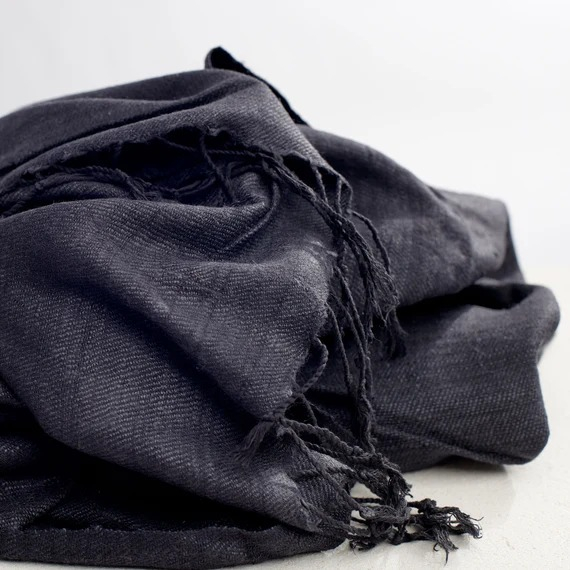
Introduction:
Charcoal dye, extracted from burnt wood or organic matter, is one of the most earthy and environmentally conscious dyes used in the textile industry. In the North-Eastern states of Nagaland, Manipur, and Assam, where sustainability and natural resources are central to traditional practices, charcoal dye is commonly employed to create various shades of grey and black. The use of charcoal in dyeing is not just a modern trend but a revival of ancient techniques that relied on readily available natural resources. Artisans in these states are increasingly turning to charcoal dye to create bold, dramatic textiles that align with the growing demand for eco-friendly products.
Description:
Charcoal dye is made from the ash and charcoal of burned wood, plant materials, or even bones. The charcoal is ground into a fine powder and mixed with water to create a dye solution. In some cases, artisans may use vinegar or other natural acids to help the dye bond to the fabric, enhancing its durability and colorfastness. The resulting dye can vary in intensity from light grey to deep black, depending on the concentration of the charcoal and the fabric being dyed.
The dyeing process typically begins with the preparation of the charcoal. In traditional settings, wood or organic material is burned in a controlled environment, producing a fine, carbon-rich charcoal. This charcoal is then sifted and mixed with water to form a dye bath. For deeper colors, artisans may allow the fabric to soak in the dye bath for an extended period, or they may use multiple layers of dye to build up the color gradually.
Charcoal dyeing is especially popular in the handloom sectors of Nagaland and Manipur, where it is used to create striking patterns on traditional garments and accessories. These textiles often feature geometric or tribal designs that are deeply rooted in the cultural heritage of the region. The bold black and grey tones produced by charcoal dye contrast beautifully with other natural dyes, such as turmeric or indigo, making it a versatile option for weavers and artisans.
One of the advantages of charcoal dye is its sustainability. Charcoal is a renewable resource, and its use in dyeing does not require any synthetic chemicals or additives. Furthermore, the dyeing process itself is non-toxic and eco-friendly, making it an ideal choice for artisans who are committed to minimizing their environmental impact. The use of charcoal dye also aligns with the zero-waste ethos that is becoming increasingly important in the textile industry, as it makes use of by-products from other processes, such as wood burning or cooking.
While charcoal dye produces beautiful, natural colors, it does require careful handling to ensure the color binds to the fabric properly. Natural fibers like cotton, silk, and wool tend to absorb the dye well, but they may require pre-treatment with a mordant such as alum or iron to enhance color retention. Without a mordant, the dye may fade over time, particularly when exposed to sunlight or frequent washing. However, when treated correctly, charcoal-dyed fabrics can retain their deep, rich tones for years.
Culturally, the use of charcoal dye in Nagaland and Manipur is often associated with traditional ceremonies and warrior attire. The dark, muted tones produced by charcoal were historically seen as symbols of strength and resilience, particularly in garments worn by tribal leaders and warriors. Today, these traditional associations remain, and charcoal-dyed textiles are still used in ceremonial garments, though they have also found a place in contemporary fashion, where they are valued for their simplicity and sophistication.
As the global fashion industry shifts toward more sustainable practices, charcoal dye is gaining recognition as an eco-friendly and culturally significant option. Its deep connection to the land and the people of North-East India makes it a meaningful choice for artisans who wish to preserve traditional dyeing techniques while embracing modern sustainability trends. The result is a range of textiles that are not only beautiful and durable but also steeped in cultural heritage.